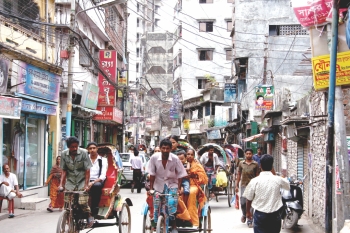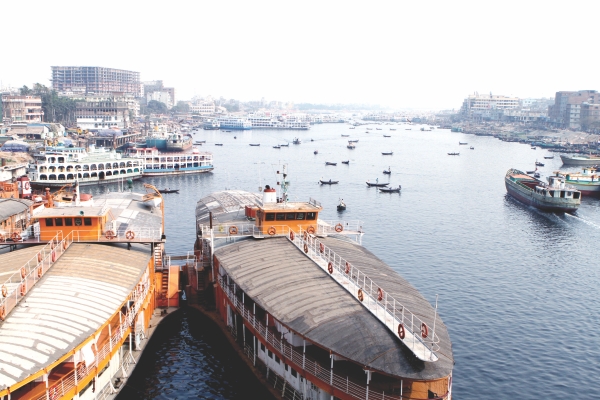| Home - Back Issues - The Team - Contact Us |
 |
| Volume 10 |Issue 33 | August 26, 2011 | |
|
|
In Retrospect Black and White Eid Syed Maqsud Jamil
Eid is around as it has been in the past few centuries and spanning many nations. A festival showcases the ethos, lifestyles and the trends of the time. Society's hunger and need for merriment is eternal. In the time we live Eid is a colourful extravaganza aided by great advances in communication and entertainment with the likes of satellite television channels and the internet. Sprawling shopping malls, elegant decors, fairy lights and the opulence of posh cars, all combine to present a pulsating mirthful spirit. But there was a time that Eid lacked the glitter and glamour but like all Eids was brimming over with sprightly joyful spirit. It was the early part of the fifties of the last century. Dhaka was a small dimly lit provincial town with around three to five lakh people. Eid after a month long Ramadan was as usual the greatest festival that produced brisk preparations and keen longing for the festivity. The shops were busy but did not have the dazzle of today's jazzy malls. Shopping was mostly done during the day. The burqa clad ladies from noble families came in hackney carriages. It was the age of black and white movies dominated by Dilip Kumar, Nargis, Madhubala, Raj Kapoor and of course, Suchitra-Uttam in the mid-fifties. The motor cars were countable. But the rickshaws were coming to the roads in greater numbers to eventually replace the hackney carriages. The big shops for Eid buying were mostly in Patuatully. Vivekananda Bastralaya and Old Amrita Lal Bastralaya drew most of the rich and middle class shoppers. Closely following them were L.Mullick and Bismillah Store. The last one used the marketing gimmick of ringing the bell to attract the customers. Vivekananda and Old Amrita Lal have since then relocated to Gariahaat of Kolkata. BIS was around near the first State Bank Building in Sadarghat, selling shoes. Beauty Shoe Store a Delhiwala enterprise soon came up near Gulistan. There were shops in Nawabpur too! The small Chinese community had their shoe making establishments in Mitford. They made fashionable 'British gentleman' shoes. Bashiruddin Master Tailor was also in Patuatully stitching sherwani, not the usual Eid dress; A D Pall a tailor near Gulistan stitched the more contemporary outfits. For the common men the places for Eid shopping were Sadarghat and Chawk Bazar. Besides Chawk Bazar was also the place for prayer caps and 'atar' (concentrated perfume). Iftar delicacies have spread all over the city but Chawk Bazar was always the hub of Iftar items. 'Boro Baper Polay Khai' (Rich man's son's favourite delicacy) has become the talk of the town but it was always there as a popular assortment of iftar items sans its recent name. The iftar items have not undergone much change, mainly muri, peaju, dal or alu puri, beguni and boot (fried gram) etc. Recent additions are Halim more.
Copyright
(R) thedailystar.net 2011 |


